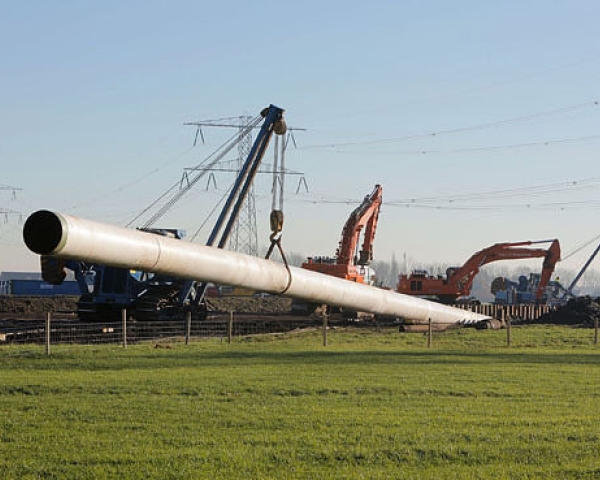
Mongstad HDD Landfall
Statoil ASA are currently developing a newly discovered oil field in the North Sea. For the transportation of crude oil, a new pipeline is required from here in to the refinery. A critical section of this new pipeline is the landfall at Statoil’s Refinery in Mongstad, Norway. This involves a complex Horizontal Directional Drilling (HDD) which has been awarded to Visser & Smit Hanab’s (V&SH) Drilling Division in The Netherlands.
Statoil and Saipem along with V&SH engineered a suitable HDD landfall route which will facilitate the eventual direct pull-in of the 36” oil pipeline from a lay barge located in the Fens Fjord into the onshore refinery complex.
For this new and challenging project Statoil turned to V&SH for assistance based on our expertise in HDD combined with the fact that we had successfully completed a similar project in 2007 on the same refinery location.
The HDD contract between Statoil and V&SH was signed in March 2016 with the design and engineering works continuing through the summer months. The drilling equipment was then mobilised to site in August 2016.
This project in Mongstad presents various and unique challenges for V&SH. From the varying rock formations and precarious changes in the layers making it difficult for the driller and steering engineer to predict what lies ahead when drilling the initial pilot hole.
Combined with the steep entry angle of 24,5 degrees and exit point at a depth of approx. 315 m below the sea level makes the workability on such a rig more difficult. As under normal conditions such a 250t HDD rig is designed for a maximum entry angle of 20 degrees. In order to meet these requirements, V&SH engineered a solution where by the drilling rig could be mounted onto a steel frame construction to enable the desired entry angle to be achieved.
The depth of exit point provides another interesting problem of differential pressure. Since the HDD exit point is approx. 315 meters below sea level, the pressure of water at such depth can cause a back flow into the drilled bore and this could result in the drilling arising’s entering the drilled bore. V&SH again engineered a solution to overcome this potential problem.
To facilitate the eventual installation of the 36” (914mm) pipeline V&SH plan on employing the forward reaming technique to open the initial pilot bore to 48” (1219mm) in three steps as its not practical to work at depths of over 300m. To flush the drilling arising’s through the bore two huge seawater pumps will flush the drilling arising’s through the bore and out onto the fjord bed.
Finally, although V&SH regularly use 7-5/8” drill rods, due to the uniqueness of this project, which involves having forward ream to such a large diameter extensive modelling and calculations had to be produced to ensure the drill pipes used would not fail due to the effect of buckling and fatigue. This project is a world first for such extreme drilling parameters. V&SH worked closely with the client and other specialist to engineer a robust solution for this truly unique situation.
Putting aside all the challenges mentioned above, credit and respect must be given to the drilling crew who are not only motivated to solve all the challenges they face on a daily basis but continue to work with a smile throughout the harsh weather conditions of the Norwegian winter.
Together with the client V&SH is looking forward to the successful completion of this project and conquering the Fens fjord for a second time!




